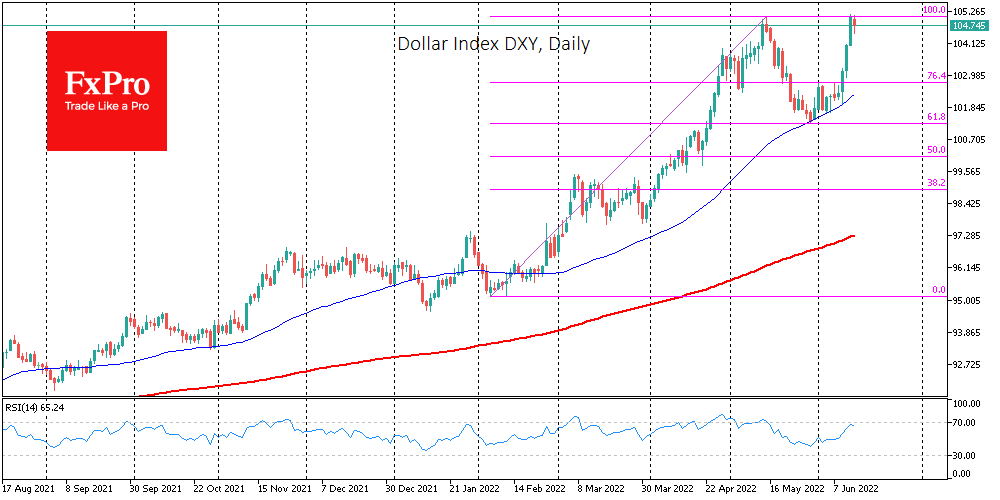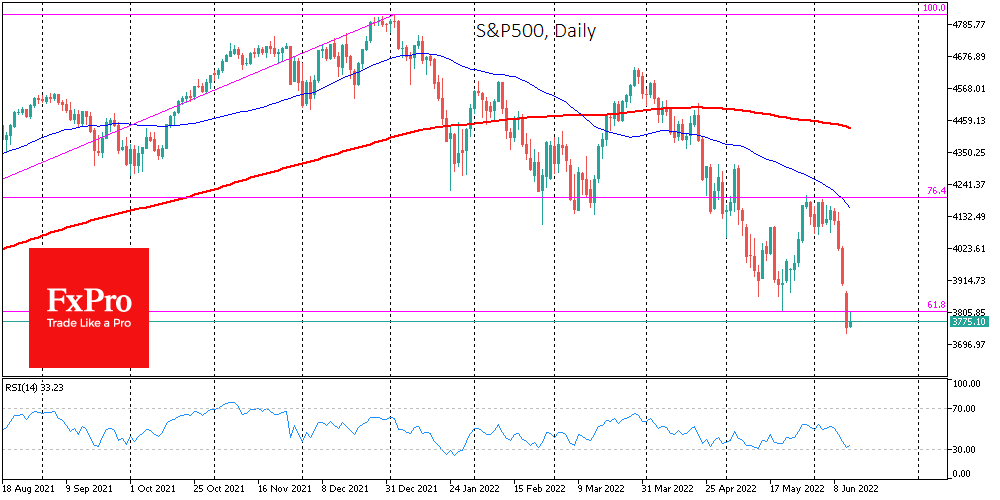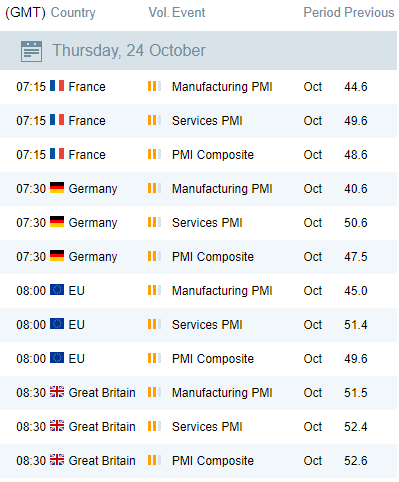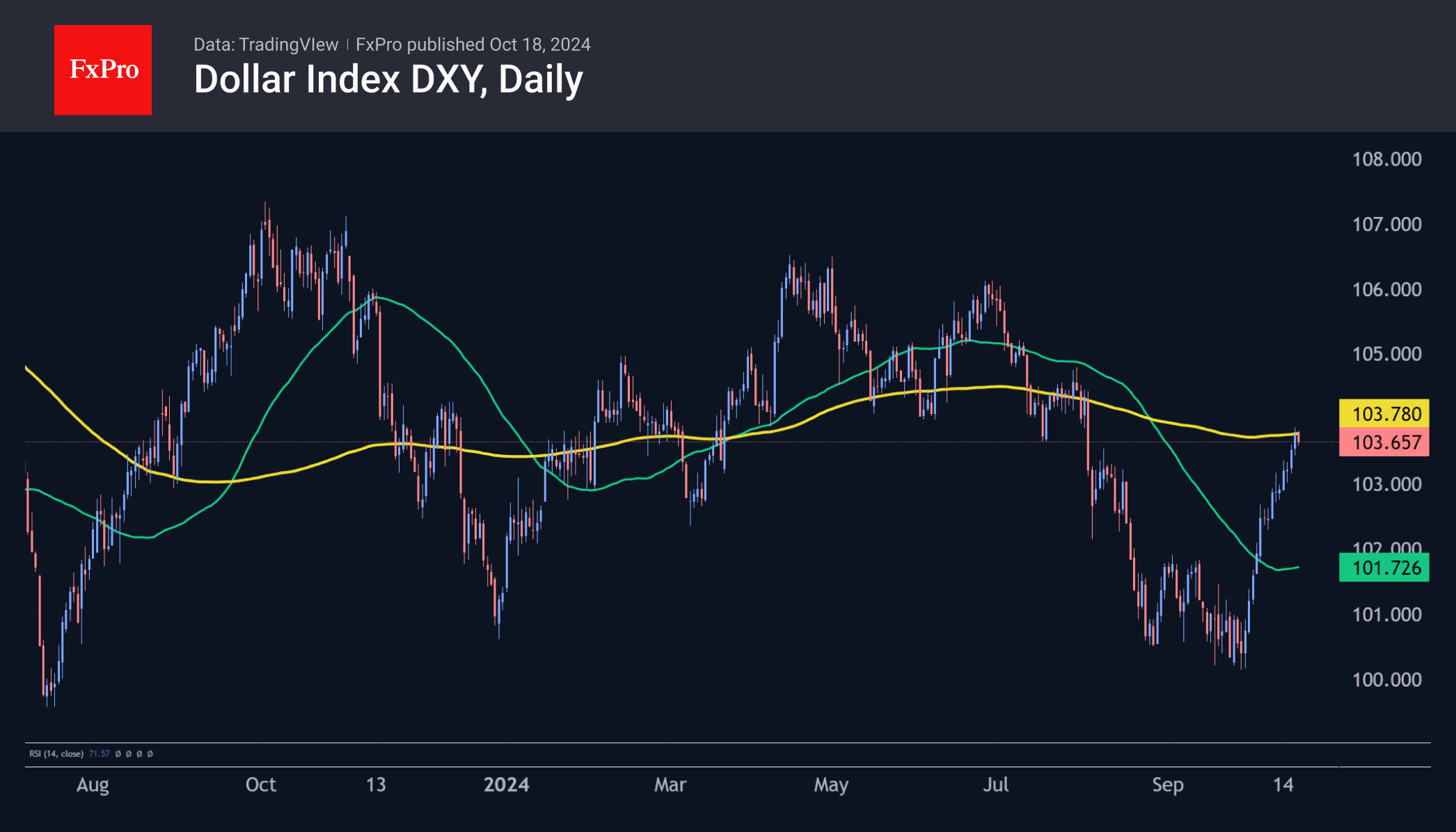Markets jumped the gun, expecting to hawkish Fed tomorrow
June 14, 2022 @ 12:57 +03:00
The S&P500 index fell 3.9% intraday on Monday, closing the index in the bear market territory. The Nasdaq collapsed more than 4.6%, losing a third of its all-time high in November last year.
The dollar index closed above 105 on Monday, renewing 20-year highs.

On Tuesday morning, markets are technically bouncing back after yesterday’s strong move, with index futures adding more than 1% at the start of the European trading session and the DXY retreating to 104.60.
Whether we see a double-top formation in the Dollar Index or a temporary stop before a breakout upwards, we are unlikely to know before we see the market reaction to the Fed’s Funds rate decisions and comments tomorrow evening.

The strong market movement from late last week was driven by consumer inflation, which in May hit a record since 1981, rising to 8.6% y/y. This data has triggered a wave of reassessment of the market outlook. Rate futures right now are laying down a 91% chance of a 75-point hike as early as tomorrow against a 35% chance the day before.
These are rather stressed estimates of the situation. But such a move would be too extreme for the Fed, which had previously warned that it was prepared to make several moves with a 50-point hike. In our view, the most hawkish of the realistic scenarios involves a 50-point rate hike and a hint of a 75 step up at the end of July if required.
Suppose the Fed’s tone is in line with our expectations. In that case, the dollar could retreat from its extreme valuations and a more sustained rebound in equities as the most frightening outlook for the economy recedes into the background.

However, although it will raise the rate by 50 points, the chances are high that the Fed will indicate a willingness to be more aggressive by warning of a readiness to raise the rate by 75 points in the next few meetings. Predictions about when the Fed intends to end policy tightening are equally crucial for the markets.
The markets expect the rate to peak at 4.00% in March next year from 0.75%.
Market expectations on how the Fed will act in the short and medium-term have formed an emotional bias towards excessive tightness.
However, with high and still rising inflation expectations, it may not be in the interest of the Fed to soften these expectations too much in the coming days and weeks. The latter means that the Fed could warn that it is prepared to act more firmly afterwards by keeping demand for the dollar and pressure on assets until the peak in inflation has occurred.
The FxPro Analyst Team








 GBP | BOE Governor Andrew Bailey Speaks
GBP | BOE Governor Andrew Bailey Speaks